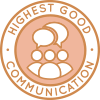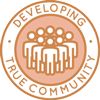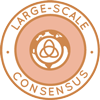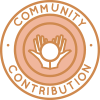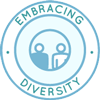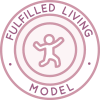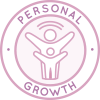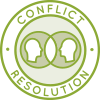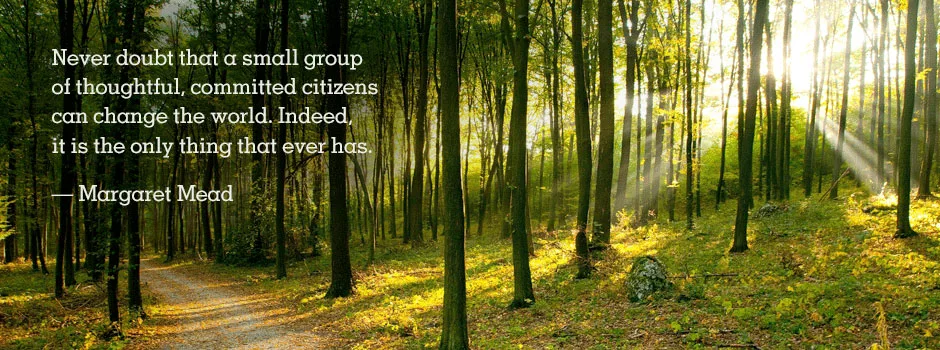
10 Community Problems and 10 Solutions
We present here 10 community problems and 10 solutions. They cover food, energy, housing, social, education, economics, transportation, and more.
We all live and interact in communities of various sizes. Our towns and cities are the communities most people think of, but we also work in communities, go to school and/or take our kids to schools that have their own community structures, and we usually belong to various social and recreational communities too. As a person and parent living on this planet of finite resources, I’m very focused on solutions and approaches that make our communities more sustainable. As the Director of the One Community Global nonprofit, I’m also interested in community solutions that can be applied globally.
With this in mind, here are 10 common community problems and 10 solutions. If you’d like information on how One Community is integrating these into ultra-sustainable communities that will function as self-sufficient and self-replicating teacher/demonstration hubs, click the related icons.
FOOD SOLUTIONS
 Food in most communities is no longer grown or raised locally and is commonly sprayed with poisons and raised with hormones. The solution is home gardens, community gardens, and markets that offer locally produced foods. The larger the community is that supports or contributes to these solutions, the more effective and comprehensive they can be. Want to be sure what is in your food and where it is coming from? Be a part of the production process.
Food in most communities is no longer grown or raised locally and is commonly sprayed with poisons and raised with hormones. The solution is home gardens, community gardens, and markets that offer locally produced foods. The larger the community is that supports or contributes to these solutions, the more effective and comprehensive they can be. Want to be sure what is in your food and where it is coming from? Be a part of the production process.
LARGE-SCALE APPLICATIONS FOR GLOBAL CHANGE
Duplicable food infrastructure designed to produce food that is grown on-site. Food grown this way will be fresher and can be produced without pesticides, herbicides, and fungicides. In addition, it will be more diverse than what people find in the grocery store because it is grown as part of our open source botanical garden model.
ENERGY SOLUTIONS
 Conserving energy and/or using energy from sources that aren’t contributing to the global climate crisis is a growing interest for many people and communities. On the individual level, installing a home solar system, adjusting your thermostat, taking shorter showers, switching to all LED lights, and turning off lights wherever not needed can make a huge difference in your power bill. Organized communities can go even further by sharing energy-heavy resources like hot tubs and pools, lobbying lawmakers for infrastructure upgrades, or even implementing microgrids.
Conserving energy and/or using energy from sources that aren’t contributing to the global climate crisis is a growing interest for many people and communities. On the individual level, installing a home solar system, adjusting your thermostat, taking shorter showers, switching to all LED lights, and turning off lights wherever not needed can make a huge difference in your power bill. Organized communities can go even further by sharing energy-heavy resources like hot tubs and pools, lobbying lawmakers for infrastructure upgrades, or even implementing microgrids.
LARGE-SCALE APPLICATIONS FOR GLOBAL CHANGE
Duplicable energy infrastructure including solar, wind, and hydro to help people eliminate their power bills and be a source of revenue for those still connected to the grid. Also, built to evolve and grow with the evolution and expansion of new technologies too.
HOUSING SOLUTIONS
 The cost of home construction, toxins in most housing materials, and durability of homes in the face of increasing natural disasters are areas of concern for many people. Today though, natural home building can address all these challenges and it’s becoming easier and more common. Free and/or open source plans using materials like straw bales, compressed earth blocks, earthbags, cob, shipping containers and other recycled materials are increasingly available. DIY tiny homes are another option.
The cost of home construction, toxins in most housing materials, and durability of homes in the face of increasing natural disasters are areas of concern for many people. Today though, natural home building can address all these challenges and it’s becoming easier and more common. Free and/or open source plans using materials like straw bales, compressed earth blocks, earthbags, cob, shipping containers and other recycled materials are increasingly available. DIY tiny homes are another option.
LARGE-SCALE APPLICATIONS FOR GLOBAL CHANGE
If the above plugin doesn't allow fullscreen, try a different browser. If that or anything else still isn't working for you, you can download a copy of the above book here: Book PDF download (128 MB)
EDUCATION SOLUTIONS
 Education isn’t an area most people think of when they think about sustainability, but many communities are unhappy with the quality, available options, or educational approach of the schooling choices available to them. For families and individuals, many free or low-cost online alternatives exist and are just a Google search away. Within communities, there are opportunities to start community-based homeschooling or after-school programs, adult classes, reading groups, etc. too.
Education isn’t an area most people think of when they think about sustainability, but many communities are unhappy with the quality, available options, or educational approach of the schooling choices available to them. For families and individuals, many free or low-cost online alternatives exist and are just a Google search away. Within communities, there are opportunities to start community-based homeschooling or after-school programs, adult classes, reading groups, etc. too.
LARGE-SCALE APPLICATIONS FOR GLOBAL CHANGE
Duplicable education models designed for all ages, built to exceed traditional educational standards, and modifiable for application in a homeschooling environment, a traditional schooling environment, or for use as a complete community-based private schooling program.
SOCIAL/RECREATIONAL SOLUTIONS
 Recent studies have shown that loneliness and depression are on the rise, and both are worse in cities. These areas continuing to rise isn’t sustainable and communities offer the solution. Find or form a group of like-minded people. Applications like MeetUp, city recreation centers, activity groups, or activist groups are great places to start. Better yet, see if you can form a group from the community of people living closest to you. If you do, you’ll skip the commute and get to know your neighbors better too.
Recent studies have shown that loneliness and depression are on the rise, and both are worse in cities. These areas continuing to rise isn’t sustainable and communities offer the solution. Find or form a group of like-minded people. Applications like MeetUp, city recreation centers, activity groups, or activist groups are great places to start. Better yet, see if you can form a group from the community of people living closest to you. If you do, you’ll skip the commute and get to know your neighbors better too.
LARGE-SCALE APPLICATIONS FOR GLOBAL CHANGE
Duplicable social architecture and recreation models built within “True Community” and designed to provide a more enriching and fulfilling living experience. All on-site, freely available, and providing more activity diversity than most metropolitan areas.
SUSTAINABLE ECONOMICS
 Almost everything listed above is a way to save money. Communities offer many more. One of the easiest to implement ideas is sharing ownership of things you seldom use. Asking your community to borrow these things rather than buying saves money and space. Shared housing or renting out that extra room can make an even bigger difference. For those willing to really embrace community, these ideas can be scaled up for even more savings. Consider developing community housing or starting a community tool library or community maker-space.
Almost everything listed above is a way to save money. Communities offer many more. One of the easiest to implement ideas is sharing ownership of things you seldom use. Asking your community to borrow these things rather than buying saves money and space. Shared housing or renting out that extra room can make an even bigger difference. For those willing to really embrace community, these ideas can be scaled up for even more savings. Consider developing community housing or starting a community tool library or community maker-space.
LARGE-SCALE APPLICATIONS FOR GLOBAL CHANGE
Duplicable for-profit and non-profit business infrastructure that prioritizes cooperation and collaboration over competition. Resource based economy application and a model for sharing it globally.
STEWARDSHIP SOLUTIONS
 Stewardship is about taking care of each other, our local communities, and our planet. There are many community groups focused on these areas. Getting involved in a group that supports areas you care about is a great way to meet people who probably share your values. Pretty much any area you see as problematic has groups working to address and solve those challenges. If you can’t find a local group, try looking for a national or global online group.
Stewardship is about taking care of each other, our local communities, and our planet. There are many community groups focused on these areas. Getting involved in a group that supports areas you care about is a great way to meet people who probably share your values. Pretty much any area you see as problematic has groups working to address and solve those challenges. If you can’t find a local group, try looking for a national or global online group.
LARGE-SCALE APPLICATIONS FOR GLOBAL CHANGE
Duplicable “Highest Good” approaches to all aspects of life. This includes community and individually applicable lifestyle considerations and small and large-scale recycling, reuse, and repurposing options for all areas: paper, plastic, glass, polystyrene/styrofoam, clothing/cloth, food and other perishable items, and even non-recyclables.
TRANSPORTATION SOLUTIONS
Transportation is another common community challenge. It includes cost of ownership and maintenance, parking and other space needs, and vehicle contributions to the climate crisis. Co-ownership, ride sharing, alternative transportation (bike, scooter, moped, etc.), and public transportation are all common solutions to this. The larger the community participating, the more effective and convenient these solutions all are.
LARGE-SCALE APPLICATIONS FOR GLOBAL CHANGE
DIY duplicable housing infrastructure designed to demonstrate community and localized living with almost everything a person needs or would want within walking distance. Models like these will eliminate the need for regular car use, but everyone will still have access to a car anytime they need or want one.
VALUES DIFFERENCES
Values differences are arguably the most destructive community challenge. Religion, politics, lifestyle preferences, dietary preferences, how to raise kids, pets, etc. can all be areas where people passionately differ in their opinions and perspectives. If unresolvable conflicts are arising, your values differences may not be sustainable. One way to address this is to choose to focus on the areas you agree. A second way is to be more transparent with your values and primarily build community with others who share them.
LARGE-SCALE APPLICATIONS FOR GLOBAL CHANGE
Duplicable and adaptable values structures based on compassion, kindness, and what we call living and creating for “The Highest Good of All.”
GLOBAL IMPLEMENTATION
Almost everyone can look at the list above and see something they would like to implement but find really challenging. Some would even like to implement all of these ideas, but how? Local, national, and global communities are the answer. Groups of people will find it easier to implement these solutions, even the individual ones. Find a group or start one, there are so many resources out there and every action makes a difference. The bigger the community, the bigger the difference.
Click these icons if you’d like to learn more about our community:
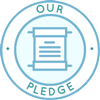
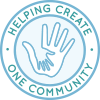
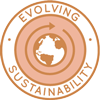

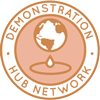


ABOUT THE AUTHOR
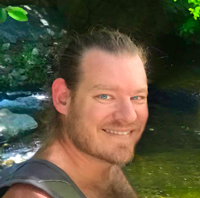 Jae Sabol is the Executive Director and founder of the One Community Global nonprofit organization, an all-volunteer think tank. One Community’s mission is to help people create a better world. We do this by demonstrating a more sustainable and enriching way of living and open sourcing everything needed for replication.
Jae Sabol is the Executive Director and founder of the One Community Global nonprofit organization, an all-volunteer think tank. One Community’s mission is to help people create a better world. We do this by demonstrating a more sustainable and enriching way of living and open sourcing everything needed for replication.
 One Community
One Community